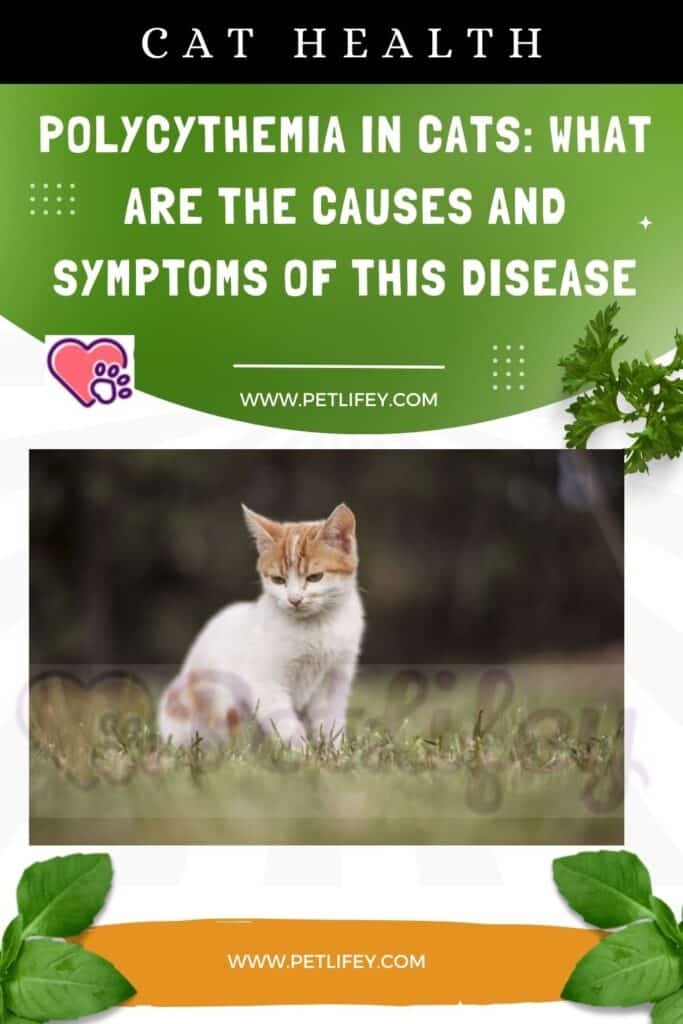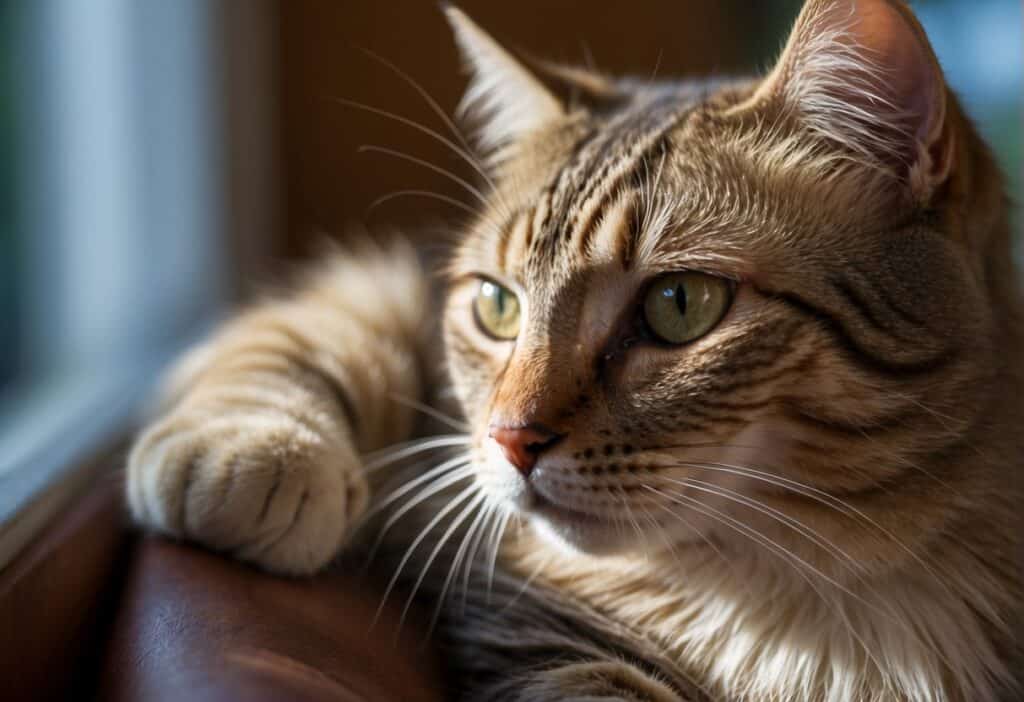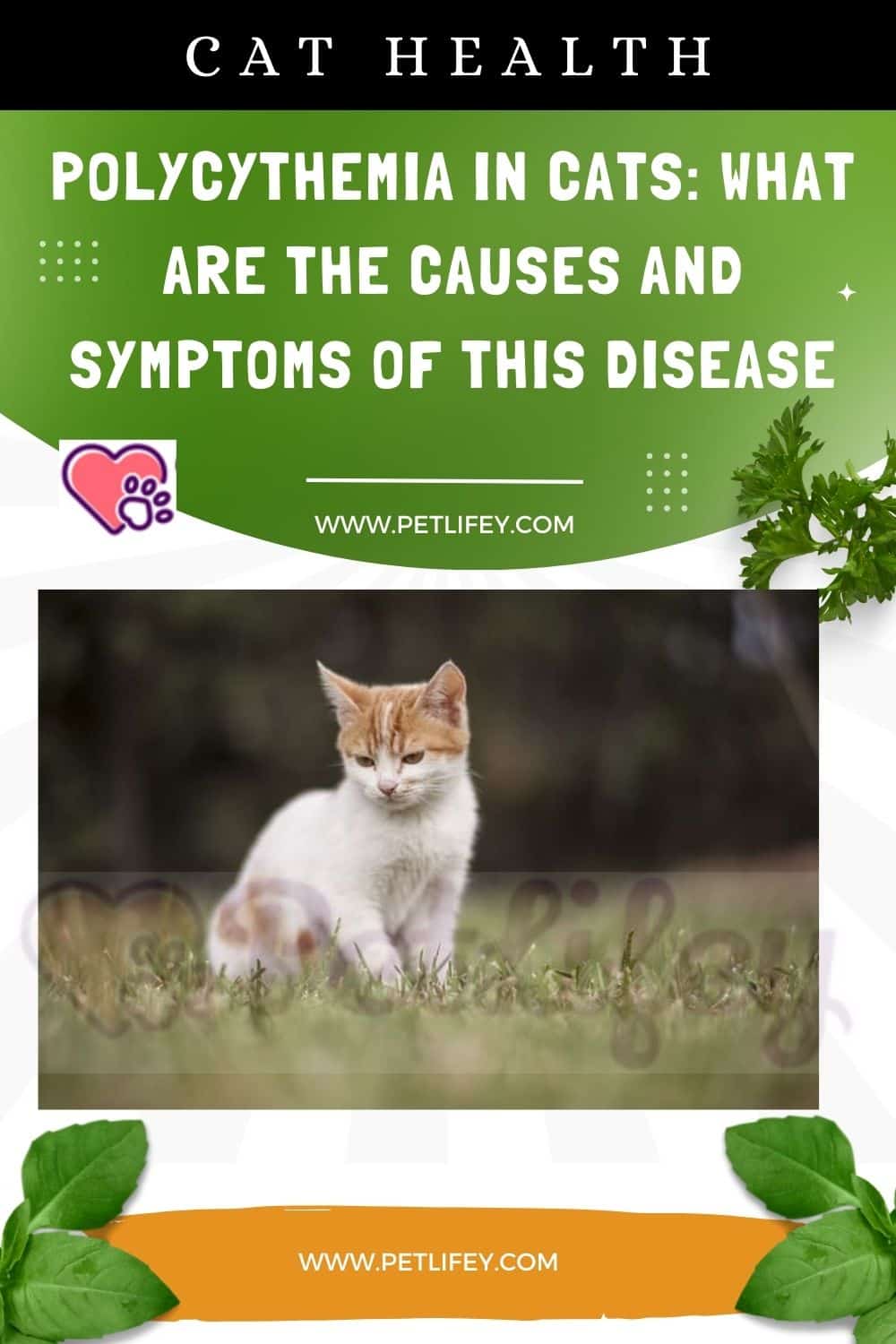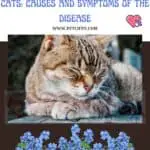Polycythemia in Cats: Understanding the Causes and Recognizing the Symptoms

Polycythemia in cats is a condition characterized by an abnormal increase in the number of red blood cells in the circulatory system. This increase can make the blood thicker and less able to flow through small blood vessels, potentially leading to various health complications. Understanding the causes and symptoms of this disease is key to managing your cat’s health effectively.
The symptoms of polycythemia may vary from subtle to overt, depending on the severity of the condition. You might notice that your cat has an increased thirst and urination frequency due to the thickened blood. Other signs to look out for include dark-red or bluish gums, lack of energy, low exercise tolerance, and breathing difficulties. Sneezing, nosebleeds, and an enlarged abdomen may also occur, indicating that prompt veterinary attention is needed.
Causes of polycythemia in cats can be primary or secondary. Primary polycythemia, which is less common, stems from an increase in red blood cell production without any identifiable cause. Secondary polycythemia is more frequent and is often a response to factors such as dehydration, kidney disease, heart disease, or tumors. Your veterinarian will conduct a series of diagnostic tests, including blood and urine analysis, to determine the underlying cause and develop an appropriate treatment plan.
Understanding Polycythemia
In this section, you’ll grasp what polycythemia in cats entails and the distinction between its primary and secondary forms.
What Is Polycythemia?
Polycythemia, or erythrocytosis, is a blood disorder in your cat where the proportion of red blood cells (RBCs) in the blood is elevated. This increase leads to a rise in the blood’s hemoglobin levels and overall blood viscosity, which can impede smooth blood flow and oxygen delivery to various parts of the body.
Primary vs Secondary Polycythemia
Primary Polycythemia, also known as Polycythemia Vera, is a rare genetic condition in cats. It is caused by a mutational change that instructs the bone marrow to produce an excess of red blood cells, independent of the body’s actual need for oxygen.
- Causes: Unknown; presumed genetic mutation
- Diagnosis: Often incidental or through tests for other issues
In contrast, Secondary Polycythemia occurs as a reactive process to underlying conditions that either reduce oxygen availability or drive an increased production of erythropoietin, the hormone responsible for RBC production.
- Causes: Hypoxia (low oxygen levels), heart disease, kidney disease, and lung disease are common triggers.
- Diagnosis: Identification of the underlying condition, measuring oxygen levels, and assessing erythropoietin levels.
Causes of Polycythemia in Cats

Polycythemia in cats is caused by an increase in the number of red blood cells. This condition can be primary, originating within the bone marrow, or secondary to other factors affecting red blood cell production.
Primary Polycythemia Causes
Primary polycythemia, also known as polycythemia vera, is a rare condition where your cat’s bone marrow produces too many red blood cells without an external stimulus. This is often due to a bone marrow disorder, which may include abnormalities or tumors within the marrow itself.
Secondary Polycythemia Causes
Secondary polycythemia is more common and stems from external causes that lead to enhanced red blood cell production. Key factors include:
- Kidney Disease: Diseases affecting the kidneys can result in excessive release of erythropoietin, a hormone that stimulates red blood cell production.
- Hypoxia: Low oxygen levels, often due to lung disease, heart disease, or living at high altitudes, can signal the body to produce more red blood cells.
- Dehydration: This can falsely elevate the red blood cell count by reducing the plasma volume in your cat’s blood.
Your cat’s health and well-being depend on a precise balance of red blood cells. Both primary and secondary causes of polycythemia warrant professional veterinary attention and care.
Recognizing Symptoms
In determining whether your cat may have polycythemia, you’ll want to observe for specific physical symptoms and behavioral changes. These indicators are vital for recognizing the disease and seeking appropriate veterinary care.
Common Physical Symptoms
Weakness and lethargy are often some of the first signs you may notice. These symptoms suggest that your cat’s body is not circulating oxygen efficiently, despite the high number of red blood cells.
- Seizures: In more severe cases, disruption in normal brain function can occur, leading to convulsions.
- Red mucous membranes: A key visible sign of polycythemia is a reddening of the gums and other mucous membranes due to an excess of red blood cells.
Your cat may also show signs of diarrhea and vomiting, which can be a consequence of the underlying conditions causing polycythemia. Another concerning symptom is blindness, which, while less common, can occur if the blood becomes too thick and disrupts normal eye function.
Behavioral Changes
The condition can lead to a noticeable increase in thirst (polydipsia) and urination (polyuria). This is your cat’s body attempting to counteract the high concentration of red blood cells.
- Lack of coordination: Watch for signs of unsteadiness or difficulty moving, as these may also be symptoms of polycythemia in your cat.
In addition to these symptoms, look for unexplained behavioral changes. These could be signs of sensory deficits or other complications arising from this condition. If your cat is showing one or more of these symptoms, it is important to consult with a veterinarian for a thorough examination and diagnosis.
Diagnostic Procedures
When you take your cat to the vet for a diagnosis of polycythemia, the diagnostic process typically involves several specific tests to measure the concentration of red blood cells and to identify potential underlying conditions.
Blood Tests
Your veterinarian will likely start with blood tests to gain a comprehensive overview of your cat’s blood cell levels. The following are key components of the blood testing process:
- Complete Blood Count (CBC): This test measures various parameters including the Red Blood Cell Count (RBC), Hemoglobin Concentration, and Packed Cell Volume (PCV), which will be significantly higher in cats with polycythemia.
- RBC Count: A high count is indicative of polycythemia.
- Hemoglobin Concentration: Elevated hemoglobin levels often accompany a high RBC count.
- PCV: This assesses the proportion of blood volume occupied by red blood cells, with elevated results supporting a diagnosis of polycythemia.
Imaging Techniques
Imaging techniques may be used to look for causes of secondary polycythemia or assess organ function:
- Ultrasound: An ultrasound can help evaluate organ size and structure, offering insight into potential causes of secondary polycythemia such as tumors or heart disease.
- X-Ray/Radiograph: X-rays of your cat’s chest and abdomen might also be conducted to check for underlying conditions that could contribute to abnormal red blood cell production.
Treatment Options
Polycythemia in cats requires careful management to reduce red blood cell counts and mitigate symptoms. Both immediate and long-term treatment strategies play a critical role in ensuring your cat’s health and well-being.
Medical Management
Medication can be an integral part of treating polycythemia. In some cases, drugs like hydroxyurea are prescribed to slow down the production of red blood cells in the bone marrow. This chemotherapeutic agent needs to be used under strict veterinary supervision due to its potential side effects. You might also discuss the use of other medications that can help in managing secondary symptoms and underlying causes, such as heart medications to improve blood flow if cardiac issues are present.
Phlebotomy and Fluid Therapy
Phlebotomy is a simple yet effective procedure where some of your cat’s blood is removed to lower the red blood cell concentration. Following phlebotomy, fluid therapy is often administered to replace the plasma volume of the withdrawn blood and maintain adequate circulation. This process can be repeated as necessary, based on your cat’s hematocrit levels and overall health status. Your vet will carefully monitor your cat’s blood flow and hydration levels throughout this process.
Ongoing Care and Monitoring
Consistent monitoring is crucial for cats with polycythemia. Regular check-ups will assess red blood cell counts and determine the need for further phlebotomy or adjustments in medication. It’s important to monitor your cat’s heart function, as increased blood viscosity can lead to cardiac stress. Iron supplements are typically not recommended unless a specific deficiency has been diagnosed, due to the risk of exacerbating the condition. Your vet may also recommend measuring erythropoietin (EPO) levels to inform the treatment plan, especially if secondary polycythemia is suspected.
Living with Polycythemia
Living with a cat diagnosed with polycythemia requires careful management to ensure that your furry friend maintains good health. Key to this are their diet and exercise routines, which should be monitored closely, especially since symptoms like lethargy can affect their activity levels. Regular physical exams are vital to keep track of your cat’s condition and prevent complications.
Diet and Nutrition
Your cat’s diet should support overall health and specifically help manage polycythemia. Ensure their meals are rich in necessary nutrients that support the kidneys, as these organs can be affected by the disease. It is important to:
- Provide constant access to fresh water to encourage hydration and support kidney function.
- Consider a diet that is lower in iron to avoid excess red blood cell production, only upon your veterinarian’s recommendation.
- Offer small, frequent meals to support a stable metabolism and avoid overloading the digestive system.
Exercise and Activity
While exercise is important for all cats, those with polycythemia may experience low exercise tolerance or lethargy as symptoms of their condition. When managing their physical activity:
- Monitor your cat for signs of fatigue or difficulty breathing, and adjust activities accordingly.
- Encourage gentle play to ensure your cat remains active without straining its cardiovascular system.
- Assess their exercise tolerance with the help of your veterinarian during regular physical exams, and tailor their activities to any changes in their health condition.
Keeping these considerations in mind can help you provide the best care for your cat living with polycythemia.
Potential Complications
Polycythemia in cats, if left untreated, can lead to serious health complications. It is crucial to understand the risks associated with untreated polycythemia and to be aware of potential side effects from treatments to manage the condition effectively.
Risks of Untreated Polycythemia
When you neglect to treat polycythemia, your cat may experience hyperviscosity, a condition where the blood becomes too thick, impeding its flow and leading to various complications. Risks associated with untreated polycythemia include:
- Thirst and Dehydration: Your cat can exhibit excessive thirst as the body attempts to counteract the thickened blood.
- Bleeding Tendencies: Despite the increased number of red blood cells, clotting may be disrupted, leading to bleeding from various parts.
- Blood Clots: These can occur due to the sludging effect of thickened blood, leading to vital organ damage.
- Leukocytosis and Anemia: Such changes in other blood cell types may arise secondary to polycythemia.
Immediate and consistent management of polycythemia is essential to prevent these severe complications.
Treatment Side Effects
Treating polycythemia can also introduce adverse effects that you should monitor as part of your cat’s ongoing care. Possible treatment side effects to be aware of include:
- Anemia: Overcorrection or aggressive treatment of polycythemia can cause a drop in red blood cells leading to anemia.
- Bone Marrow Suppression: Certain medications and interventions aimed at reducing red blood cell production might temporarily suppress bone marrow function.
- Secondary Issues: Depending on the treatment, side effects such as reduced immunity or gastrointestinal problems may occur.
Understanding these potential side effects can help you make informed decisions about your cat’s treatment plan and monitor for any adverse reactions.
Conclusion
Polycythemia, a critical condition in cats characterized by an abnormal increase in red blood cells, necessitates timely attention from your vet. The primary symptoms to watch for include difficulty breathing, lethargy, and changes in mucous membrane color. As a cat owner, recognizing these signs early can lead to prompt treatment, which might involve procedures to reduce the blood viscosity.
Treatment strategies are diverse, ranging from addressing dehydration to more complex interventions like phlebotomy, depending on the underlying cause of polycythemia. Regular follow-ups will likely be a part of your long-term management plan to monitor your cat’s condition and prevent complications.
Your vet will guide you through the nuances of care; this may encompass medications to manage secondary symptoms and dietary adjustments to support overall health. Adhering to these recommendations ensures you are providing the best possible care.
In managing polycythemia, understand that each cat’s journey is unique. As their guardian, your observation and adherence to treatment plans play vital roles in your cat’s quality of life.







